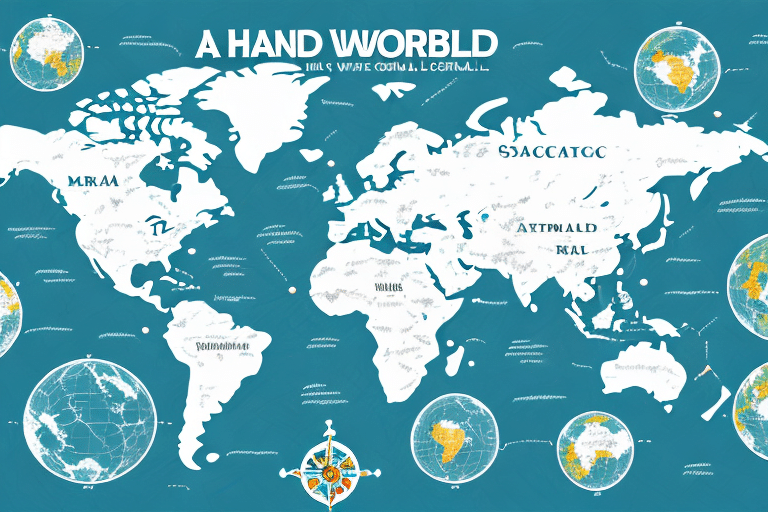The Importance of Global Expansion for Brands
Global expansion is essential for brands aiming to stay competitive and grow in today’s interconnected economy. With advancements in technology, the internet, and transportation, connecting with customers worldwide has never been easier. However, international expansion comes with its own set of challenges, including cultural differences, language barriers, and legal complexities. Despite these hurdles, the rewards of global branding are substantial. Companies entering new markets can tap into new revenue streams, diversify their customer base, and enhance overall brand awareness.
Benefits of International Branding
- Economies of Scale: Expanding into new markets increases production volume, potentially lowering costs per unit and enabling more competitive pricing.
- Access to New Talent: Global expansion provides access to diverse talent pools, fostering innovation and enhancing business performance.
- Brand Awareness: Establishing a presence in multiple regions strengthens brand recognition and credibility worldwide.
Overcoming Challenges in Global Expansion
While the benefits are significant, navigating the complexities of international markets requires strategic planning. Companies must address cultural nuances, comply with local regulations, and manage logistical challenges such as shipping and distribution. Building strong local partnerships and investing in market research are critical steps in mitigating these challenges.
Identifying and Understanding Your Target Markets
The first step in successful international branding is identifying your target markets. Conduct comprehensive market research to analyze demographics, language, cultural values, and purchasing behaviors within potential regions. Understanding local demand and assessing the competitive landscape are vital to determining your ability to compete with established local brands.
Market Research and Analysis
- Utilize data-driven insights from reputable sources such as Statista and IBISWorld to understand market trends and consumer behavior.
- Analyze customer feedback and conduct surveys to gauge local interest in your products or services.
Tailoring Marketing Efforts
Once target markets are identified, customize marketing strategies to resonate with local audiences. This may involve adapting messaging, packaging, or product offerings to align with regional preferences and cultural norms. Additionally, consider logistical aspects such as shipping, distribution, and local regulatory compliance.
Developing a Strong Global Brand Strategy
A robust global brand strategy balances consistency with localization. While maintaining core brand values and identity, your strategy should be adaptable to different cultural contexts. Elements such as language, color schemes, imagery, and messaging should be carefully considered to ensure they resonate with local audiences while differentiating your brand from local competitors.
Cultural Adaptation and Consistency
- Adapt content to reflect local languages and cultural references.
- Ensure consistent branding across all channels to reinforce brand recognition.
Legal and Regulatory Considerations
Understanding and complying with local laws and regulations is crucial. This includes trademark registrations, advertising standards, and product safety regulations. Collaborating with local legal experts can help navigate these requirements and avoid potential legal issues.
Navigating Cultural Differences
Successful international branding requires a deep understanding of cultural differences. This involves recognizing and respecting local norms, values, and consumer behavior patterns. Adapting your brand to align with cultural expectations can enhance customer engagement and loyalty.
Understanding Local Norms and Values
Research cultural norms and consumer behaviors to tailor your marketing and product offerings accordingly. For instance, color meanings and symbolism can vary significantly between cultures and should be considered in branding materials.
Partnering with Local Influencers
Collaborating with local influencers can bridge cultural gaps and build trust with local consumers. Influencers can provide authentic endorsements and insights into effective marketing strategies within their regions.
Building and Optimizing Your Online Presence
A strong online presence is vital for global branding. Your website should be multilingual and optimized for local search engines. Providing comprehensive information, including pricing, product descriptions, and shipping details, enhances user experience and builds credibility.
Multilingual Website Optimization
- Translate website content accurately to cater to local languages.
- Optimize for local SEO by incorporating region-specific keywords and meta descriptions.
Content Creation for Diverse Audiences
Create engaging, relevant content tailored to the interests and needs of multilingual audiences. High-quality content can position your brand as an industry authority and foster trust among potential customers.
Leveraging Social Media and Influencers
Social media platforms are powerful tools for expanding international reach. Tailor your social media strategies to align with the preferences and behaviors of local audiences on platforms popular in each target market.
Effective Social Media Strategies
- Run targeted advertising campaigns tailored to local demographics.
- Engage with followers through interactive content and responsive communication.
Partnering with Local Influencers
Influencers can amplify your brand message and increase visibility in new markets. Select influencers who align with your brand values and have a genuine connection with their audience.
Measuring Success and Adapting Strategies
Measuring the effectiveness of your international branding efforts is crucial for ongoing success. Utilize key performance indicators (KPIs) to assess the impact of your strategies and make data-driven adjustments as needed.
Key Metrics and Analytics
- Monitor website traffic and user engagement metrics.
- Track social media interactions and conversion rates.
- Analyze revenue growth and market share in target regions.
Continuous Improvement
Regularly review performance data to identify areas for improvement. Stay agile by adapting strategies based on market feedback and evolving trends.
Future Trends in International Branding
Staying ahead of emerging trends is essential for maintaining a competitive edge in international markets. Key trends to watch include the rise of e-commerce, increasing demand for localized products, and the integration of artificial intelligence and machine learning in marketing strategies.
Emerging Technologies and Strategies
- Adopt AI-driven tools for personalized marketing and customer service.
- Leverage data analytics to gain deeper insights into consumer behavior.
Adapting to Market Shifts
Stay informed about global economic shifts and consumer preferences to ensure your brand remains relevant and resilient in changing environments.
Conclusion
Expanding your brand internationally presents both challenges and opportunities. By strategically identifying target markets, developing a strong and adaptable brand strategy, navigating cultural differences, building a robust online presence, leveraging social media and influencers, thoroughly understanding local laws, and continuously measuring and refining your efforts, your brand can achieve significant global growth. Embracing emerging trends and maintaining agility will further position your brand for sustained success in the international arena.






















